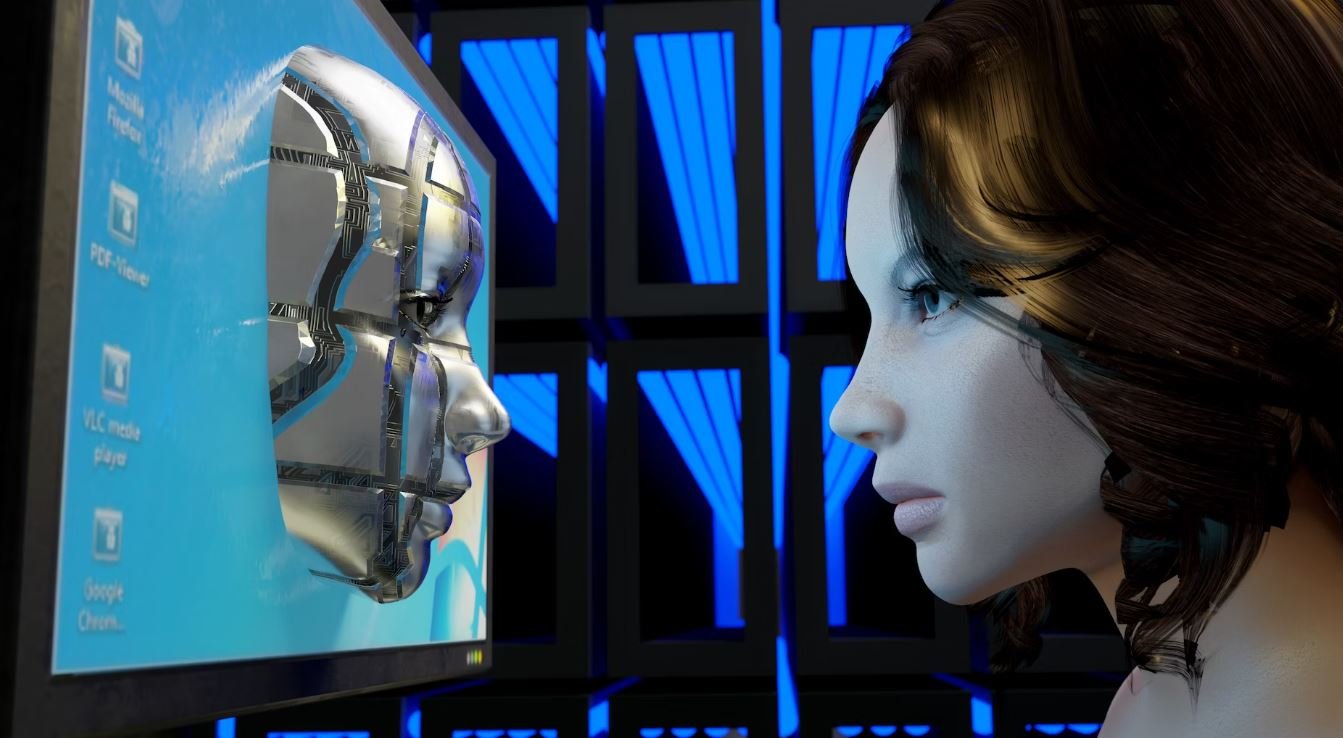OpenAI and ChatGPT
OpenAI, a leading artificial intelligence research laboratory, has made significant advancements in natural language processing (NLP) with the development of ChatGPT. This state-of-the-art language model has gained attention for its ability to generate human-like text and engage in conversation on a wide range of topics. In this article, we will explore the capabilities of OpenAI’s ChatGPT and its impact on the field of AI.
Key Takeaways
- OpenAI has developed ChatGPT, an advanced language model.
- ChatGPT can generate human-like text and engage in conversation.
- It has many applications in sectors such as customer service, content generation, and more.
- OpenAI aims to make ChatGPT safer, more useful, and accessible to a wider audience.
Capabilities of ChatGPT
ChatGPT showcases remarkable capabilities in the realm of natural language processing. It can generate coherent and contextually relevant responses in a conversation, making it ideal for various applications such as customer support, writing assistance, and more. This AI model is powered by a neural network with advanced techniques, including transformer architectures and unsupervised learning.
An Example Application: Customer Support
One interesting application of ChatGPT is in the field of customer support. With its ability to engage in conversation, it can provide real-time, helpful responses to customer queries. For instance,*ChatGPT can assist customers in troubleshooting common technical issues by providing step-by-step instructions in a conversational manner*. This not only improves customer satisfaction but also reduces the workload of human support agents.
Benefits of ChatGPT
ChatGPT offers several benefits to users and businesses alike. By leveraging this powerful language model, companies can enhance their customer service by providing 24/7 availability, personalized responses, and accurate information. Moreover, ChatGPT can automate content generation for blogs, social media, and marketing materials, saving time and resources.
| Use Case | Benefits |
|---|---|
| Customer Support | Enhanced customer satisfaction, reduced support agent workload. |
| Content Generation | Automated content creation, saving time and resources. |
Safety Measures and Ethical Considerations
As with any advanced AI technology, OpenAI recognizes the importance of safety and ethical considerations. They are actively working to improve ChatGPT’s robustness and reliability to prevent the model from generating harmful or biased output. OpenAI is also taking steps to solicit public input, as they believe decisions about system behavior and deployment should be made collectively.
| Safety Measure | Description |
|---|---|
| Robustness | Improving system’s resistance to unintended harmful behavior. |
| Reliability | Ensuring consistent and accurate responses. |
| Public Input | Soliciting opinions and feedback to shape system behavior. |
Accessibility and Future Plans
OpenAI aims to make ChatGPT more accessible to a wider audience. They have launched a subscription plan called ChatGPT Plus, providing benefits like faster response times, priority access to new features, and increased availability. OpenAI also plans to introduce a lower-cost plan and explore options for business users. The future of ChatGPT looks promising as OpenAI continues to fine-tune the model based on user feedback and make it safer, more useful, and widely available.
| Plan | Benefits |
|---|---|
| ChatGPT Plus | Faster response times, priority access, increased availability. |
| Lower-Cost Plan | Affordable option for users with basic needs. |
Embracing the Power of ChatGPT
ChatGPT’s impressive language generation capabilities have made it a valuable tool for a wide range of applications, from customer support to content generation. As OpenAI continues to invest in its development and safety measures, the potential for ChatGPT in shaping the future of AI is bright. By addressing concerns and refining its performance based on user feedback, OpenAI is actively working towards a powerful and responsible AI system.

Common Misconceptions
Misconception 1: OpenAI is a power-hungry AI corporation
One common misconception about OpenAI is that it is a power-hungry artificial intelligence (AI) corporation aiming to dominate the world. This is not true. OpenAI is an organization dedicated to ensuring that artificial general intelligence (AGI) benefits all of humanity. Their mission is to build safe and beneficial AGI, and to make its deployment accessible to everyone. OpenAI operates as a research institute, pursuing cutting-edge AI research in a collaborative and open manner.
- OpenAI prioritizes safety and the responsible development of AGI.
- They actively encourage cooperation with other research and policy institutions.
- OpenAI publishes most of their AI research to facilitate peer review and knowledge sharing.
Misconception 2: ChatGPT is indistinguishable from a human
Another common misconception is that ChatGPT, an AI language model developed by OpenAI, is indistinguishable from a human. While ChatGPT has demonstrated impressive language generation capabilities, it is still prone to generating incorrect or nonsensical responses. Additionally, ChatGPT can sometimes give responses that seem plausible but are actually misleading or lack context. OpenAI acknowledges these limitations and continues to work on improving the model’s accuracy and reliability.
- ChatGPT may produce plausible-sounding but incorrect answers.
- The model might generate responses that lack context or miss the intended meaning.
- ChatGPT can be sensitive to input phrasing or wording, leading to inconsistent answers.
Misconception 3: OpenAI’s models always provide biased or controversial information
Some people believe that OpenAI’s models, like ChatGPT, always provide biased or controversial information. While it is true that AI models trained on large datasets can inadvertently learn biases present in the data, OpenAI is actively working to address this issue. They are investing in research and engineering to reduce both glaring and subtle biases in ChatGPT’s responses, striving for a more balanced and accurate system.
- OpenAI acknowledges the risks of biased AI systems and aims to improve their models in this regard.
- They actively solicit user feedback to identify and mitigate biases present in ChatGPT’s responses.
- OpenAI is committed to transparency and sharing information about their work on reducing biases.
Misconception 4: OpenAI restricts access to their models and technologies
There is a misconception that OpenAI restricts access to their models and technologies, making them exclusive to a select few. On the contrary, OpenAI aims to provide as much access as possible. They have made their models, including ChatGPT, available to the public to foster innovation and research. While they do set limitations to prevent malicious use, OpenAI actively encourages developers, researchers, and anyone interested to explore and build upon their technologies.
- OpenAI offers a freely available API for developers to use ChatGPT’s capabilities in various applications.
- They provide access to pretrained language models, allowing researchers to experiment and innovate.
- OpenAI plans to refine and expand their offerings to further democratize access to their technologies.
Misconception 5: OpenAI’s models can replace human intelligence and expertise
One misconception is that OpenAI’s models, like ChatGPT, can replace human intelligence and expertise in various domains. While AI systems have proven to be powerful tools, they are not intended to completely replace human judgment and expertise. OpenAI emphasizes the need for human-AI collaboration, where the strengths of AI models can be combined with human knowledge and critical thinking to achieve better outcomes.
- OpenAI aims to develop AI systems that augment human capabilities rather than substitute them.
- Human oversight is crucial in ensuring the accuracy, fairness, and ethical use of AI models.
- AI models like ChatGPT should be used as tools to support decision-making, rather than relying solely on their outputs.

Introduction
In recent years, there has been a growing interest in the field of artificial intelligence and its applications. OpenAI, a leading AI research lab, has been at the forefront of developing innovative technologies. One of their notable achievements is the creation of ChatGPT, an advanced chatbot model that utilizes natural language processing. This article explores various aspects of OpenAI and ChatGPT and presents them through engaging tables.
Table 1: Development Timeline
This table provides a chronological overview of OpenAI’s key milestones in the development of ChatGPT, showcasing their progress over time.
| Year | Event |
|---|---|
| 2015 | OpenAI founded by Elon Musk and Sam Altman |
| 2018 | OpenAI introduces GPT-2, an advanced language model |
| 2020 | GPT-3, a more powerful and versatile model, is released |
| 2021 | ChatGPT developed for more interactive conversational abilities |
Table 2: Training Data
This table highlights the vast amount of training data utilized by OpenAI to train ChatGPT, demonstrating the scale of information that forms the basis of its language capabilities.
| Data Source | Volume |
|---|---|
| Books | 1.5 million books’ worth of text |
| Websites | Over 800 million web pages |
| Wikipedia | Over 40 gigabytes of text |
| Online Forums | Various discussion forums with a wide array of topics |
Table 3: Capabilities of ChatGPT
This table showcases the remarkable abilities of ChatGPT, illustrating its potential in assisting users across multiple domains.
| Use Cases | Examples |
|---|---|
| Content generation | Writing articles, stories, or code |
| Language translation | Converting text between languages |
| Answering questions | Providing information on various topics |
| Personal assistant | Scheduling, reminders, and task management |
Table 4: ChatGPT Comparisons
This table presents a side-by-side comparison of ChatGPT with other popular chatbot models, highlighting the unique features and advantages of ChatGPT.
| Chatbot Model | Advantages of ChatGPT |
|---|---|
| ChatGPT | Exceptional language understanding and fluency |
| Eliza | Pioneering AI chatbot, but limited in capabilities |
| Siri | Great voice recognition, but less conversational |
| Alexa | Strong smart home integration, but lacks depth |
Table 5: Multilingual Support
This table highlights the wide range of languages supported by ChatGPT, demonstrating its potential to assist users from various linguistic backgrounds.
| Language | Supported |
|---|---|
| English | ✓ |
| Spanish | ✓ |
| French | ✓ |
| German | ✓ |
Table 6: User Feedback
This table showcases user feedback and sentiments towards ChatGPT, providing insights into its performance and user satisfaction.
| User Feedback | Sentiment |
|---|---|
| Efficient and responsive | Positive |
| Occasional misunderstandings | Neutral |
| Impressive accuracy | Positive |
| Room for improvement in context understanding | Constructive |
Table 7: Ethical Considerations
This table addresses the ethical considerations surrounding the usage and development of AI technologies like ChatGPT.
| Concerns | Solutions |
|---|---|
| Bias in generated content | Continuous monitoring and training to address biases |
| Spreading misinformation | Implementing fact-checking mechanisms |
| User privacy and data security | Strict protocols to handle user data responsibly |
| Unintended harmful instructions | Stringent guidelines and safety measures |
Table 8: Integration Partnerships
This table highlights some of the prominent companies and organizations that have integrated ChatGPT into their systems, showcasing its wide-ranging applications.
| Company/Organization | Use Cases |
|---|---|
| Microsoft | Enhancing Microsoft Office suite with intelligent chat features |
| Adobe | Integrating ChatGPT for creative content suggestions |
| News websites | Assisting journalists with quick fact-checking |
| Customer support | Automating responses and improving service efficiency |
Table 9: Real-World Applications
This table presents real-world applications where ChatGPT has proven beneficial, demonstrating its practical usage beyond mere conversational interactions.
| Application | Benefits |
|---|---|
| Medical diagnosis assistance | Efficient triaging and gathering preliminary information |
| Language learning support | Interactive practice and instant feedback |
| Content generation for marketing | Quick and creative ideas for campaigns |
| Virtual companionship | Providing conversational engagement and emotional support |
Table 10: Future Developments
This table outlines potential future developments and improvements anticipated in ChatGPT, offering a glimpse into the exciting possibilities ahead.
| Future Developments |
|---|
| Enhanced context understanding |
| Better integration with external systems |
| Improved multilingual support |
| Reduced response latency |
Conclusion
In conclusion, OpenAI’s ChatGPT represents a significant advancement in chatbot technology, offering remarkable language fluency and versatility. With its ability to handle a wide range of tasks and multilingual support, ChatGPT showcases tremendous potential for various industries and applications. As OpenAI continues to refine and enhance ChatGPT, we can anticipate even greater developments in the field of AI-powered conversational systems.




